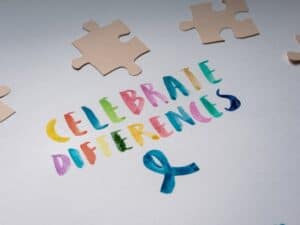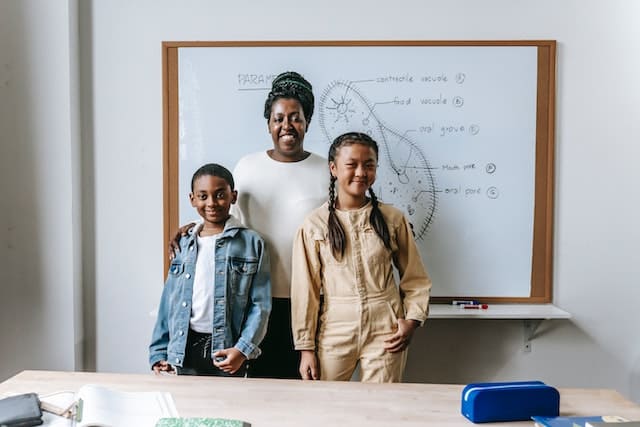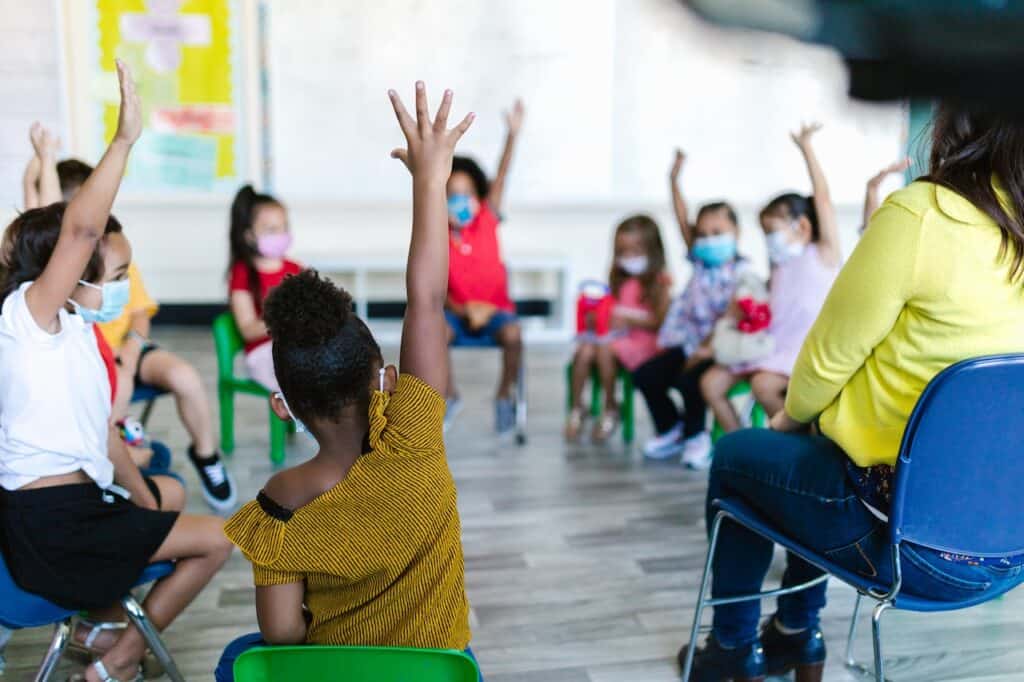In our fast-paced and interconnected world, promoting inclusivity and diversity in education has become an urgent calling. As educators, it is our duty to create learning environments that honor and celebrate the unique identities and experiences of each student. By adopting a human-centered approach that values inclusivity, empathy, and respect, we can embark on a transformative educational journey for all learners. Together, let us work together to ensure we create the best equitable learning environment for all of our students to be successful.
In this blog post, we will explore practical strategies and approaches that empower us as educators to champion inclusivity and diversity in our classrooms. From recognizing the significance of inclusivity to implementing inclusive curriculum and fostering a welcoming classroom atmosphere, we will delve into essential elements that shape the development of equitable learning environments. Together, let’s embrace our role as agents of change and create educational spaces where every student feels valued, seen, and inspired to reach their full potential.
Understanding Inclusivity and Diversity
Inclusivity: Inclusivity is the foundation of creating equitable and welcoming learning environments. It’s about more than just tolerance; it’s about actively embracing and valuing the diversity of all students. As educators, our goal should be to foster an environment where every student feels respected, accepted, and supported.
When we talk about inclusivity, we’re acknowledging that every student is unique and brings their own identities, experiences, perspectives, and strengths to the classroom. It’s about recognizing that diversity is a strength and an asset that enriches the educational experience for everyone involved.
Creating an Inclusive Classroom
To create an inclusive classroom, it’s important to create a safe space where individuals feel like they belong. I want each student to know that their race, ethnicity, gender, sexual orientation, socioeconomic background, religion, language, or abilities do not define their worth or their ability to succeed. I want to celebrate and affirm each student’s cultural heritage, linguistic background, and individual identity.
Benefits of an Inclusive Classroom
In my inclusive classroom, differences are not only accepted but celebrated. I encourage students to express their thoughts and ideas freely, to ask questions, and to engage in meaningful discussions. I believe that by creating an environment where students feel comfortable being themselves, we can nurture their confidence, self-esteem, and love for learning.
Inclusivity goes beyond the classroom walls; it extends to the broader school community. I believe in forming collaborative partnerships with families to create a supportive network that reinforces inclusivity at home and in the educational setting. By involving parents, families, and community members, we can work together to create an environment that embraces diversity and fosters a sense of belonging for all.
Diversity
In the classroom, embracing diversity means recognizing and celebrating the unique qualities that each student brings. It’s about creating an environment where every student feels valued, respected, and included for who they are. As an educator, I believe that diversity is not only something to be acknowledged, but something to be embraced and cherished.
When we embrace diversity, we open the door to a wealth of perspectives, experiences, and ideas. It’s a beautiful tapestry of cultures, languages, abilities, and backgrounds that enriches the educational journey for everyone involved. I want my students to know that their differences are not obstacles, but strengths that can contribute to the collective learning experience.
In an inclusive classroom, I encourage my students to share their stories, experiences, and perspectives. I want to create a safe space where they feel comfortable expressing themselves, knowing that their voices matter. By doing so, we create opportunities for deeper understanding, empathy, and growth.
Embracing diversity also means ensuring that our curriculum and instructional materials reflect the diverse world we live in. I strive to incorporate diverse resources, literature, and multimedia that represent a wide range of identities and experiences. This allows students to see themselves reflected in their education and fosters a sense of belonging.
Impacts of Inclusion and Diversity
The impact of inclusivity and diversity in the classroom is profound. When we create an inclusive environment where every student feels valued and respected, we unlock their full potential. Inclusive classrooms promote academic achievement, social development, and overall well-being. Students learn to appreciate different perspectives, challenge their own biases, and develop empathy and understanding. They become more culturally competent and prepared to navigate the diverse world they will encounter beyond the classroom. Lastly, inclusivity and diversity not only enhance the educational experience, but they also lay the foundation for a more equitable and inclusive society.

Implementing Inclusive Curriculum and Instruction
Implementing inclusive curriculum and instruction is crucial for creating equitable and engaging learning experiences. As an educator, I strive to incorporate diverse perspectives, cultures, and experiences into my teaching. By doing so, I ensure that all students feel seen, heard, and valued. I select inclusive resources and materials that reflect the diversity of my students, helping them to connect with the content on a personal level. I also embrace different learning styles and provide differentiated instruction to meet the diverse needs of my students. Implementing an inclusive curriculum and instruction not only promotes academic success but also fosters empathy, critical thinking, and a deeper understanding of the world around us. It prepares students to be active and compassionate participants in our diverse society.
Culturally Responsive Teaching
In your role as an educator, culturally responsive teaching is an essential approach that recognizes and values the cultural backgrounds of your students. By incorporating students’ cultural perspectives, experiences, and histories into your teaching, you create a more engaging and relevant learning environment. Culturally responsive teaching promotes inclusivity, validates students’ identities, and helps them feel connected to the content. It allows you to build stronger relationships with your students and helps them succeed academically and socially. Embrace the power of culturally responsive teaching to create a classroom that celebrates and respects the diverse cultures present within it.
Inclusive and Diverse Resources
In your classroom, utilizing inclusive and diverse resources is a powerful way to ensure that all students feel represented and valued. By selecting materials that reflect a wide range of identities, cultures, and experiences, you create an inclusive learning environment. These resources allow students to see themselves and others in the content, fostering empathy and understanding. In addition, it also exposes them to different perspectives and helps them develop a broader worldview. Embrace the richness of inclusive and diverse resources to create an engaging and equitable learning experience for all students.
Differentiation and Universal Design for Learning (UDL)
In your teaching practice, differentiation and Universal Design for Learning (UDL) are powerful tools that ensure every student’s diverse needs are met. By tailoring instruction to accommodate various learning styles, abilities, and interests, you create an inclusive and accessible learning environment. Differentiation allows you to provide personalized support and challenges for each student, fostering their engagement and success. UDL ensures that instructional materials and methods are designed to be flexible and inclusive from the start. Embrace differentiation and UDL to empower every student to reach their full potential and thrive in your classroom.

Creating a Welcoming and Inclusive Classroom Environment
In creating a welcoming and inclusive classroom environment, your goal is to foster a sense of belonging and acceptance for every student. By establishing clear expectations and norms that promote respect and empathy, you create a safe space for everyone to express themselves freely. You actively address bias and stereotypes, encouraging open discussions and critical thinking. Collaboration and group work become opportunities for students to learn from and appreciate one another’s differences. You strive to create an environment where every student feels valued, heard, and supported. Together, you cultivate a classroom community that celebrates diversity and embraces the uniqueness of each individual.
Establishing Classroom Norms
Next, when it comes to establishing classroom norms, your role as an educator is crucial. By setting clear expectations and norms, you create a safe and inclusive space for all students. Encourage open communication, respect, and empathy among your students. Involve them in the process of creating these norms, allowing them to take ownership of their learning environment. By establishing classroom norms that promote a sense of belonging and mutual respect, you lay the foundation for a positive and inclusive classroom culture where every student can thrive.
Building Positive Relationships:
Building positive relationships with your students is at the heart of creating an inclusive classroom. Take the time to get to know your students individually, showing genuine care and interest in their lives. Foster open communication, trust, and mutual respect. By building strong relationships, you create a safe and supportive environment where students feel comfortable expressing themselves and taking risks in their learning. Next, be approachable, listen attentively, and provide guidance when needed. Investing in positive relationships with your students paves the way for their academic and personal growth.
Addressing Bias and Challenging Stereotypes
As educators, we hold a crucial role in addressing bias and challenging stereotypes in our classrooms. Let’s empower our students to question assumptions and explore diverse perspectives. We can create a safe and inclusive space where every voice is valued and respected, fostering open discussions. By offering opportunities to learn about different cultures, histories, and experiences, we promote critical thinking, empathy, and understanding. Together, we have the power to cultivate a classroom where each student feels seen, accepted, and empowered to challenge societal biases. Finally, it will ultimately nurturing a more inclusive and compassionate world.
In Conclusion
Promoting inclusivity and diversity in education is not just a destination but a continuous journey, grounded in our shared humanity. It requires us to approach our role as educators with empathy, open-mindedness, and a genuine desire to learn and grow alongside our students.
By embracing the principles of inclusivity, empathy, and respect, we can create transformative learning environments where every student feels acknowledged, appreciated, and inspired to embrace their unique potential.
As compassionate educators, we hold the key to shaping a brighter future by fostering inclusive mindsets, nurturing empathy, and celebrating the rich tapestry of diversity within our classrooms. Together, let us embark on this meaningful journey, rooted in our shared humanity, and create equitable learning environments where all students can thrive and contribute to a more inclusive society.


